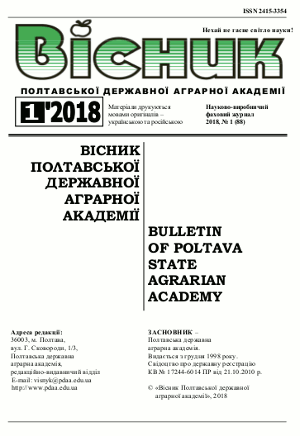Influence of methods of basic surface treatment and fertilizer systems on obstinacy of field crops
DOI:
https://doi.org/10.31210/visnyk2018.01.11Keywords:
weeds, soil cultivation, fertilizer system, potential infiltration, actual infestation, crop rotationAbstract
The data on influence of the methods of the basic tillage of the soil and fertilizer systems on the anthropogenic activity of field crops are given. It has been established that the systematic conduct, during four rotations of nine-way crop rotation, of disk and planar varieties, results in an increase in the potential forbearance of the soil by 22–50 %, compared to annual plowing. The use of organo-mineral and organic fertilizer systems leads to an increase in the number of weeds in a layer of 0–20 cm in 1.2–1.5 times, compared with the unhealthy background. The actual aging of winter wheat agrocenosis at the beginning of the growing season in the course of plowing and discarding under different fertilizer systems is respectively 9–18 and 23–42 pcs./m2, whereas in spring crops (lupine, linseed, corn, potatoes) these indicators range from 8–92 and 26–708 pcs./m2.

 Creative Commons Attribution 4.0 International Licens
Creative Commons Attribution 4.0 International Licens